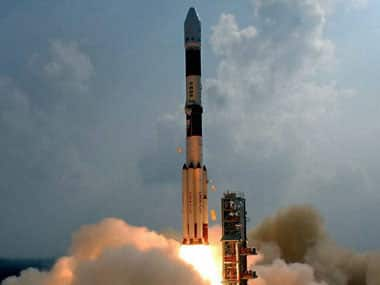When Nasa launches Maven on 18 November, it would have spent $679 million to do roughly what Isro’s Mangalyaan is expected to do, if it successfully launches itself into the Mars orbit - study the planet’s atmosphere. Only, Isro has spent approximately $600 million less in attempting to do what the premier US space agency is set to do yet again. In fact, the Curiosity Rover that Nasa sent to Mars in 2011, cost the agency a whopping $2.5 billion. However, Isro faced stinging criticism from several quarters at home and abroad, for spending ’lavishly’ on a space mission to find methane in Mars - that is the simplistic and most favoured line of argument that most naysayers have taken to. China, possibly miffed at suggestions that India might overtake the country in a ‘space race’, has lost no time in pointing out that India has 320 million people reeling under poverty - hence hinting that the attempt to compete in a space race is obnoxious in its most charitable definition. The quest has also been dismissed as the ‘delusion of the elite’ by the likes of economist Jean Dreze. Columnist Tavleen Singh joined the chorus saying:However, Deviprasad Karnik, spokesperson for Isro tried putting things in perspective by commenting that the launch of the Mangalyaan is a ‘modest’ beginning for the country and the space agency’s inter-planetary mission. Backing his claim, a Reuters report points out that on succeeding, the project which costs way less than say, Narendra Modi’s Sardar Patel statue, might help India capture the Rs 15,10,000 crores global space market with its low-cost technology. [caption id=“attachment_1213603” align=“alignleft” width=“380”]  Isro’s Mangalyaan takes off. PTI.[/caption] In fact, A Arunan, project director for Mangalyaan has confessed that the project’s cost has grabbed more headlines than any other aspect of the programme. In a report on NPR, David Alexander of US-based Rice Space Institute explains that the cost-effectivity of the project can be split into two halves - parts and labour, both of which have been mostly indigenous in the case of Mangalyaan, which has helped to make it cheaper. The fact that Indian engineers don’t demand astronomical remunerations have contributed greatly to the moderate pricing of the project. The NPR report notes:
“The mean annual income for an aeronautical engineer in the United States is just under $105,000, according to the Bureau of Labor Statistics. While it’s difficult to make direct comparisons, a blog that covers the aerospace industry in India indicates that the higher end of the scale for engineers there is less than $20,000… The average electronics engineer in the United States makes a little more than $120,000, according to Salary.com, as opposed to India, where Glassdoor.com says he or she might pull in less than $12,000 a year at a company such as Samsung India.”
According to a report on The Business Insider, the optimum costing was achieved by Isro’s attention to what The Economic Times calls ‘frugal engineering’. The space agency didn’t spend lavishly on coming up with completely new technology, and instead improved on existing technology. It didn’t spend millions testing that technology repeatedly. While that poses a veritable threat to the success of the mission, Isro has tried address the issue is the most cost-effective way possible. The Business Insider notes:
“This frugal approach does increase risks, which are evident from India’s previous failed space missions. Also, instead of flying directly, the 350-tonne rocket will orbit earth for nearly a month, building up the necessary velocity to break free from the earth’s gravitational pull.”
The Hindustan Times points out that ISRO’s budget is Rs 4,270 crore, of which the space agency uses only seven percent for planetary explorations. The rest is used for research on education, medicine, water and disaster management. The HT report says:
“Isro also defrays government support through a commercial arm, Antrix. Through the sale of satellite imagery, satellite launches and so on, Antrix earned a pre-tax R2 billion in 2010 alone. Isro officials privately say they have utilitarian reasons for symbolically exciting projects like the Mars mission: it helps them “recruit engineering talent” despite the agency’s government salary structure.”
An article on Quartz magazine counters the several strains of criticism against the Mangalyaan mission by explaining that even the richest and the most powerful nations in the world have poor people. It points out that in 1962, when US President John F Kennedy declared America was set to go to the moon, the country had 21 percent of its population living below the poverty line. Even last year, poverty numbers in the US - home to Nasa - didn’t go down dramatically, it stood at 15 percent. The most glaring absurdity of the collective dissent against the Mars mission stems from the fact that while no one seems to openly criticise the existence of a space research agency, there is a surge in criticism against the relevance of what is easily their primary activity - conducting research in areas of space science. Arguing against the Mangalyaan is probably juvenile at its best. For example, India’s defence budget for the fiscal 2013-14 is Rs. 2,03,672.1 crore. Despite what seems like a mindboggling number to a layman, several soldiers have been shot down along the Line of Control, civil disharmony has killed hundreds in the current year and there have been several terrorist strikes of moderate intensity on the country. Using the logic applied to criticise the Mangalyaan, then one can say that either the budget isn’t enough, or the allocation is pointless since it hasn’t guaranteed that no life is lost in the country due to internal or external threats. An editorial on Gulfnews.com captures the primary flaw in the barrage of such arguments when it says that a country’s development cannot be adjudged based only on how many mouths it feeds successfully. It says:
“To subscribe to such arguments, however, is to completely miss the woods for the trees. A nation’s state of development is not only gauged by how many mouths it manages to feed, but also by the expansion of its technological prowess. No country that holds its own in the upper echelons of the global community of nations, in multiple platforms, can afford to waste an opportunity in realising its scientific potential.”
Impact Shorts
More ShortsAs another article on _Firstpost_ points out, India has shown predilection for spending crores of money on things logically way less useful than a space mission with at least a sense of profitable purpose. The outcry against it, therefore, makes for unnecessary self flagellation.


)

)
)
)
)
)
)
)
)



